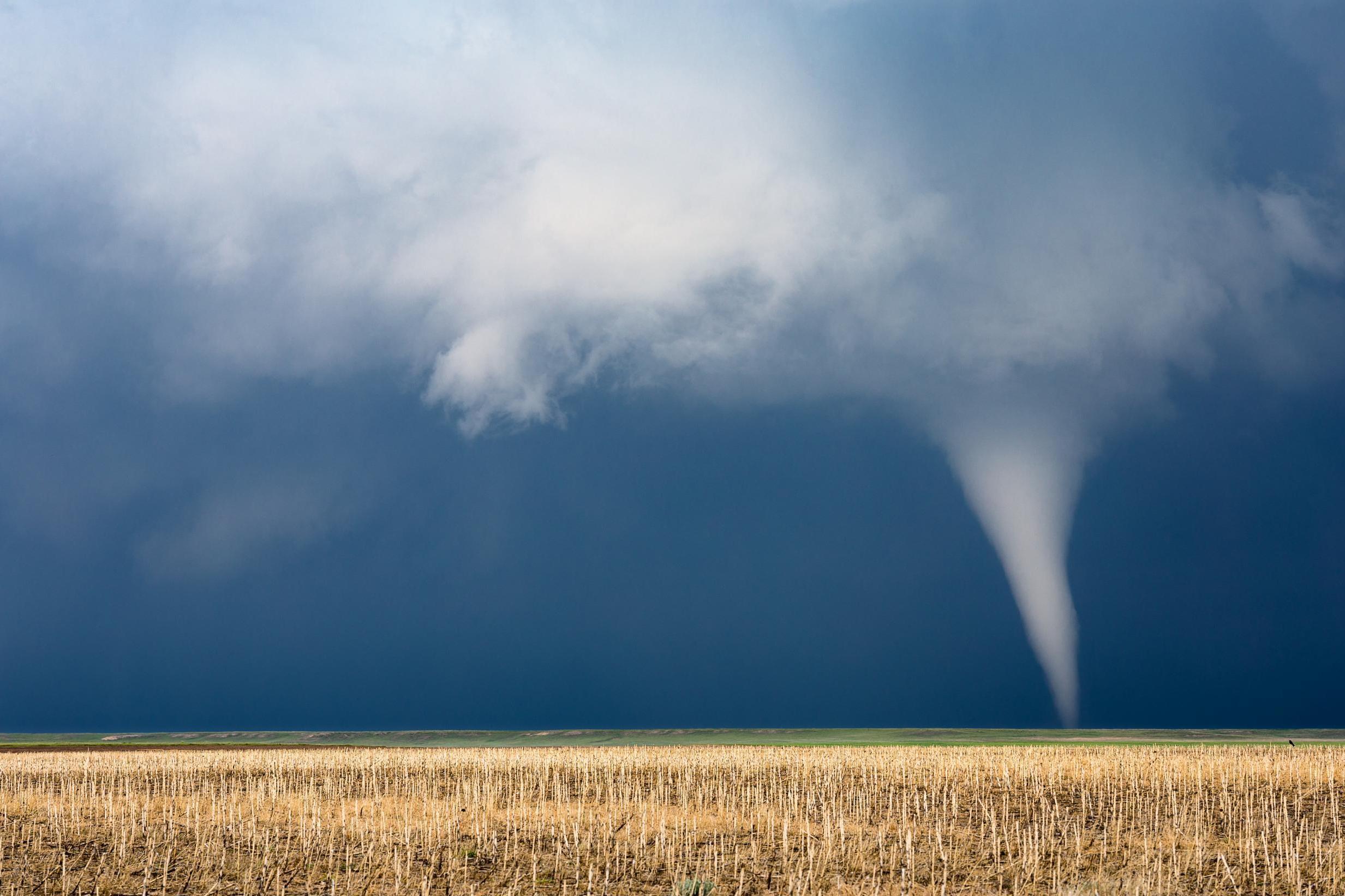When is tornado season and how can you protect yourself from a storm?
Historically, May sees the most tornadoes with an average of 275

Spring is nearly here, which means the return of tornado season for many states in the US.
Tornado season, the period of the year when the most tornadoes strike, occurs from April through June.
The months of April and May often bring the strongest storms, with May typically the most common month for tornadoes.
This is what you need to know about tornadoes, and the steps you can take to protect yourself during the dangerous storms.
What is a tornado and when do they occur?
Tornadoes are narrow funnels of spinning air that extend from the base of a thunderstorm to the ground, according to The National Severe Storms Laboratory (NSSL).
The storms form when warm air collides with cold, dry air and the rising warm air causes an updraft, which begins to rotate if winds are strong enough.
The swirling mass of air is known as a vortex and often has wind speeds anywhere from 75 to 100 miles per hour, according to the Met Office, with winds up to 200 mph possible.
The naturally occurring weather phenomenon, which is often difficult to see unless the storm forms a condensation tunnel, is the most violent of all atmospheric storms.
In addition to high winds, tornadoes can also bring hail and move hundreds of miles per hour.
Tornadoes are rated using the Enhanced Fujita scale, which ranges from EF-0 to EF-5 based on the severity of the storm.
In the US, peak tornado season in the Southern Plains occurs during May into early June, while the Gulf coast often sees tornadoes earlier in the year.
According to the NSSL, the storms are most common between 4-9pm, however, they can occur at any time of the year and any time of day.
The US is hit with roughly 1,000 tornadoes a year.
How do you know if a tornado is coming?
If a tornado watch is issued by the National Oceanic and Atmospheric Administration (NOAA), it means conditions are favourable for tornadoes to form.
A watch can cover parts of a state or multiple states.
A tornado warning is issued by a state’s local NOAA National Weather Service (NWS) Forecast Office and occurs when a tornado has been spotted or seen on radar.

It is important to be prepared for both tornado watches and tornado warnings, and to take the necessary safety steps for each.
How do you prepare for a tornado?
If you live in an area of the country that is frequently hit by tornadoes, the first step in ensuring your safety is having a tornado safety plan in place, according to the NOAA’s Storm Prediction Centre.
A safety plan, which should be shared with the entire family or all individuals in the house, includes knowing where to seek shelter during the storm, and having a safe place to meet after the storm.
If a watch is issued, make sure you have access to the latest information regarding the storm.
What should you do during a tornado?
If a tornado is approaching, the most important step is immediately finding shelter in an area of the house or building that has no windows or doors, as flying debris is the greatest danger during the storm.
Once you have taken shelter, you should cover yourself with heavy blankets, a mattress or a sleeping bag.
Avoid taking shelter under areas where heavy objects rest on the floor above as they can fall through a weakened floor, as well as under overpasses or bridges.
According to Ready.gov, if you have nothing to cover yourself, you should use your arms to protect your head and neck.
What should you do after the storm?
If you think the storm has passed, it is important to confirm before exiting your shelter. The Federal Emergency Management Agency (FEMA) advises listening to local authorities and weather channels for the latest storm updates.
Once it is okay to leave the shelter, avoid fallen power lines and broken utility lines. You should also avoid entering damaged buildings.
FEMA also recommends using your phone only for emergency phone calls, as phone systems are often down or busy after a disaster.

If you have a planned meeting place, meet there if it is safe to.
For more tornado safety information, the NOAA recommends visiting https://www.weather.gov/safety/tornado or https://www.weather.gov/wrn/spring-safety.
Join our commenting forum
Join thought-provoking conversations, follow other Independent readers and see their replies
Comments
Bookmark popover
Removed from bookmarks